Born free
On a patch of grassland to the east of Qinghai Lake, a 7-year-old Przewalski's gazelle was eating fruit fed to it by a volunteer. While the gazelle seems healthy now, when rescued by local volunteers seven years ago it was weak and barely alive. Unfortunately this is not an isolated case and many other gazelles are also struggling to survive the rapid changes they have faced in their habitat.
Wild Przewalski's gazelles are now found only in China's Qinghai Province. In 2003, there were less than 200 Przewalski's gazelles remaining on Earth, and the International Union for Conservation of Nature (IUCN) listed it as a "critically endangered species."
Over the past decade, the local government, experts and volunteers were able to increase the number of the gazelles to around 1,000 through research and conservation efforts, and in 2008, the IUCN moved the classification of the species to just "endangered." But the gazelles still face severe challenges.
One comes from their dwindling habitat. In 1994, Qinghai Province started to implement a grassland contracting policy, allocating grazing lands that used to be public to individual herder households. Since then, households started to put up fences around their land, posing a severe threat to the gazelles who lost a large percentage of their habitat.
These fences not only compress their living areas, but also threaten their lives. Nan Jia, a former businessman and herder who is now committed to the protection of the gazelles and other endangered species in Qinghai, said that gazelles which try to leap over the fences were often injured by them, with some even strangled to death. He's also seen pregnant gazelles having miscarriages after barbed wire pierced their abdomen.
Nan and his volunteer team have been persuading herders to lower the height of their fences and remove the thorny barbed wire from them. Over 20 herder households have joined Nan's team to protect the gazelles.
Nan, along with NGOs working on animal conservation, have also rented 133 hectares of grassland to be a safe habitat for the gazelles. But due to the rent going up in recent years, Nan said they will soon be unable to afford this.
The local government is applying for national funding for the protection of the gazelles, hoping that this will help protect their habitat.
Global Times
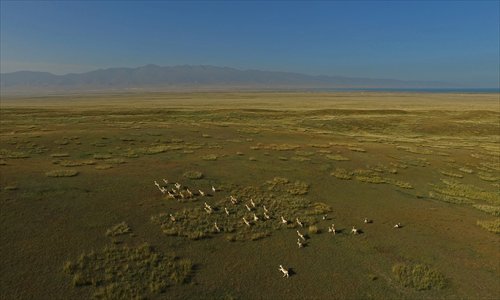
Dozens of gazelles run across the grassland. Photo: CFP
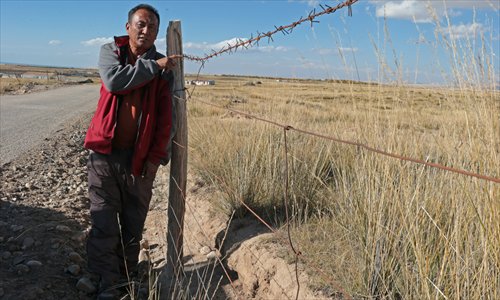
Nan examines a fence on the grassland. Many local herders have lowered their fences to 0.8 meters from over 1 meter, and removed the barbed wire from them to ensure the gazelles' safety. Photo: CFP
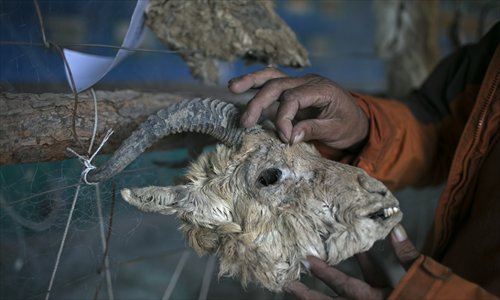
Nan Jia built a Wildlife Conservation Showroom in the Qinghai Lake Nature Reserve, in which he exhibits the skulls of Przewalski gazelles that were found dead on the grassland. Nan invites herders to visit to boost their awareness of endangered species. Photo: CFP
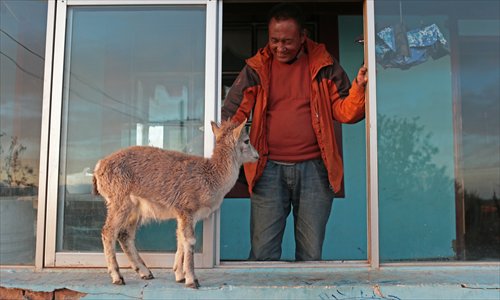
Nan pets a 4-month-old bharal, which he rescued, at his home. Bharals are listed as grade-2 protected animals in China. Photo: CFP
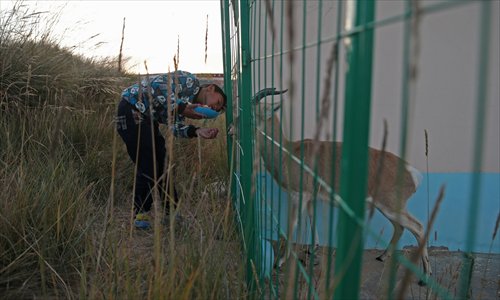
Sangjie, Nan's 11-year-old son, feeds a gazelle fruit in Nan's own grassland. The gazelle, rescued 7 years ago, became dependent on humans to feed it and returns regularly. Photo: CFP